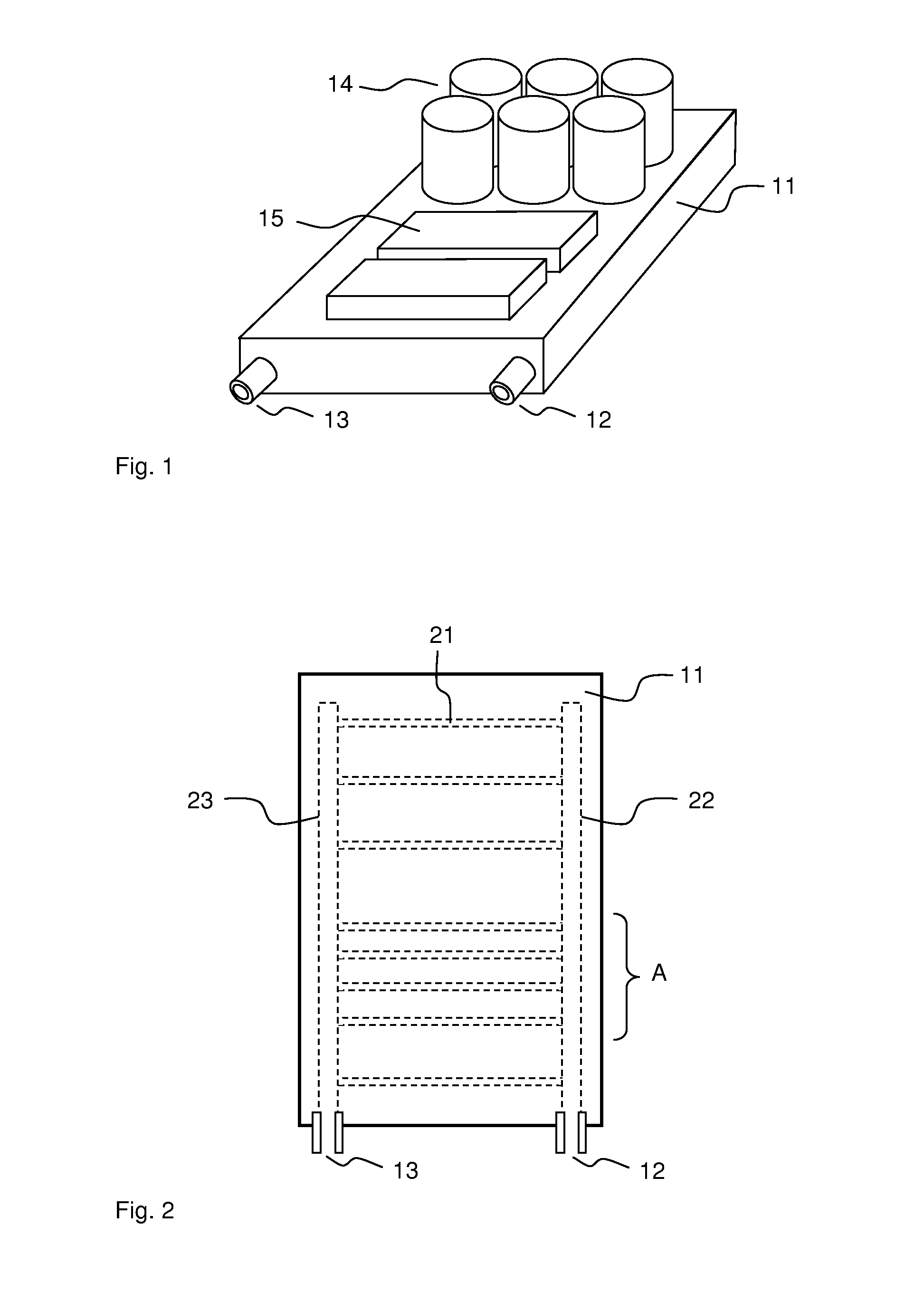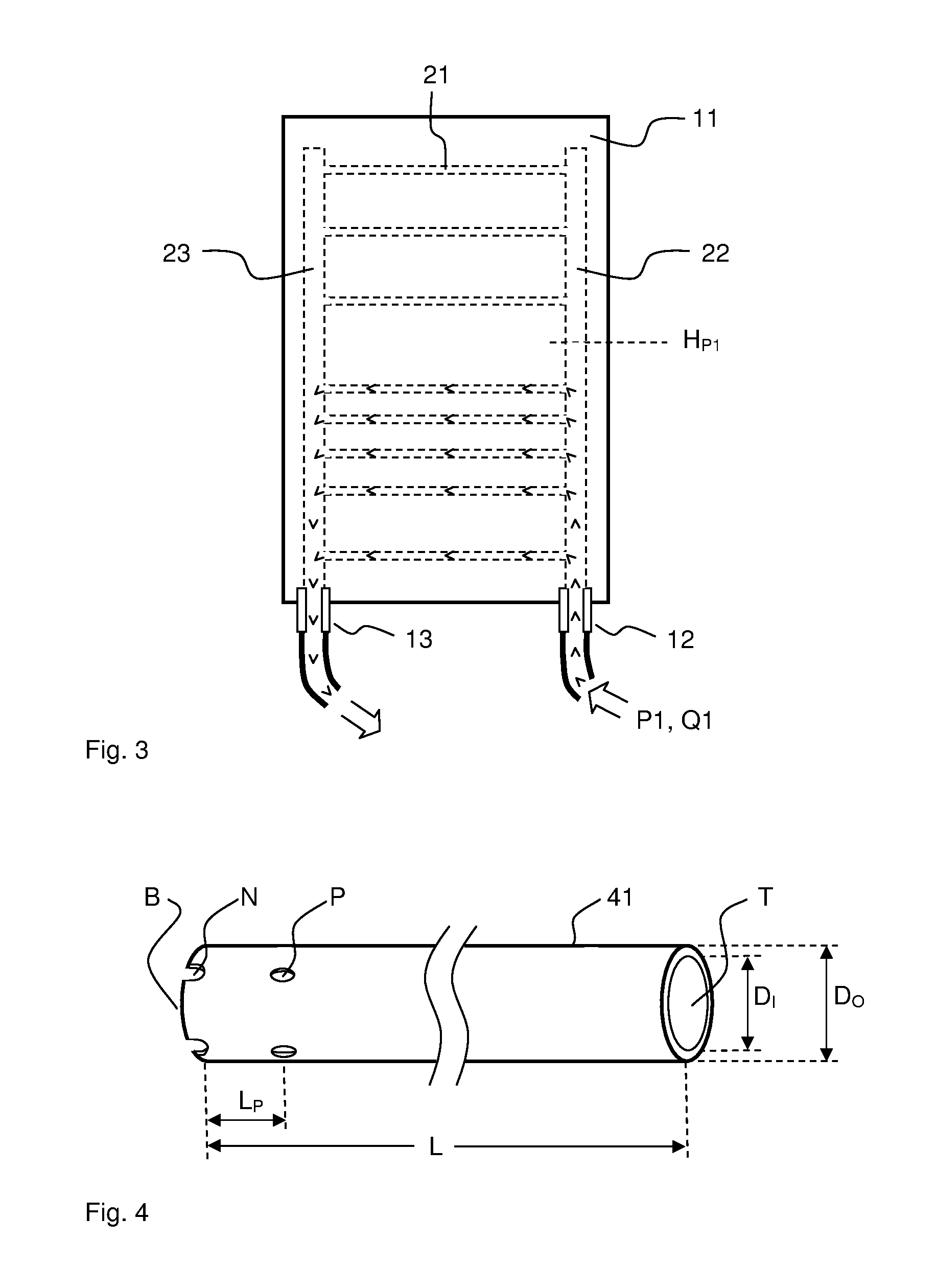Arrangement in a liquid cooler
- Summary
- Abstract
- Description
- Claims
- Application Information
AI Technical Summary
Benefits of technology
Problems solved by technology
Method used
Image
Examples
Embodiment Construction
[0025]FIG. 1 presents the typical placement according to the invention of power components on a liquid cooler. For the sake of clarity, the figure is simplified and only the cooler and the essential parts from the viewpoint of the current invention are presented in it, but not e.g. the connection parts or fixing parts of components. In the figure, the external liquid circulation is connected to the cooler 11 via the input connector 12 and the output connector 13. The power components that require cooling, such as capacitors 14 and power semiconductor modules 15, are fixed, to achieve the most effective possible heat transfer, tightly against the cooler, e.g. by screwing or by compressing by means of suitable additional parts.
[0026]FIG. 2 presents one arrangement principle of the internal liquid ducting of a prior-art cooler, to such of which this invention can be applied and such of which has become known e.g. from patent publications U.S. Pat. No. 6,032,726 and U.S. Pat. No. 7,320,...
PUM
 Login to View More
Login to View More Abstract
Description
Claims
Application Information
 Login to View More
Login to View More - R&D
- Intellectual Property
- Life Sciences
- Materials
- Tech Scout
- Unparalleled Data Quality
- Higher Quality Content
- 60% Fewer Hallucinations
Browse by: Latest US Patents, China's latest patents, Technical Efficacy Thesaurus, Application Domain, Technology Topic, Popular Technical Reports.
© 2025 PatSnap. All rights reserved.Legal|Privacy policy|Modern Slavery Act Transparency Statement|Sitemap|About US| Contact US: help@patsnap.com



